MensHealth.com – To keep up with the Chrises, Stan upgraded his diet, training, and worldview. And 2020 is shaping up to be his best year ever.
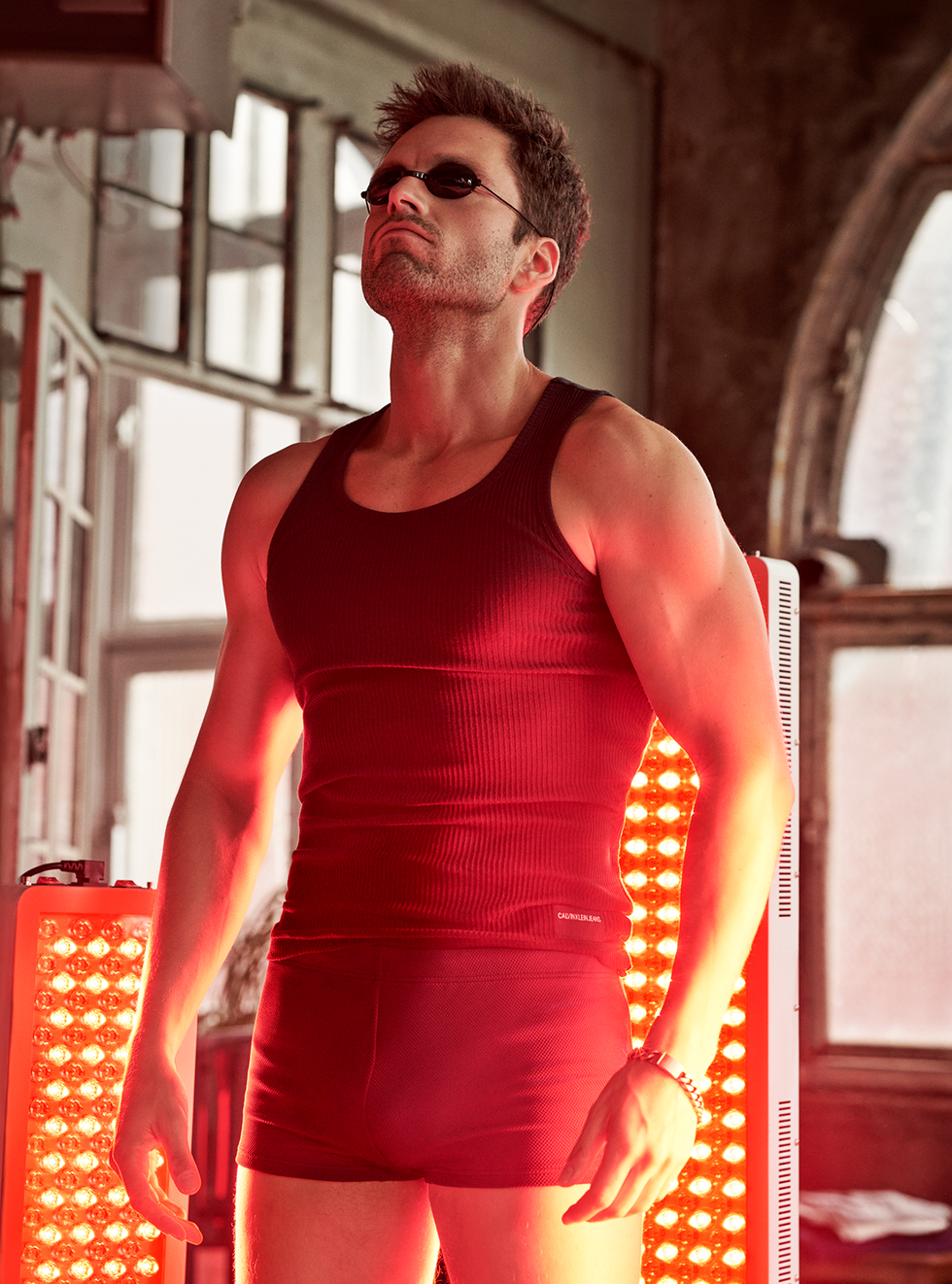
THE COFFEE-SHOP staff is having a silent meltdown. The peppermint tea I ordered was forgotten as soon as Sebastian Stan walked in. He orders a coffee, receives it instantly, and goes to put it down on a table. The lid isn’t fully on, and the coffee spills. It’s almost a “stars are just like us” moment, but then a barista suddenly materializes with a paper towel in his outstretched palm. “It’s wet,” he says eagerly.
Stan, 37, is wearing black shorts, a black T-shirt, midcalf black socks, and a gray hoodie missing its drawstring. He looks very off-duty SoHo, which he is: He’s back home in New York City on furlough from preparations for The Falcon and the Winter Soldier, an extravagant collaboration between Marvel and newborn streaming service Disney+.
He’s also wearing a blue baseball cap, which sits slightly higher on his head than it might on the head of someone with less va-va-voom hair. That hair sent the Internet into a tizzy recently, when a poster for Falcon showed Stan with a short cut. In the past when Stan has played the Winter Soldier (né Bucky Barnes), he’s had shoulder-length hair. Next to his forehead, which is giant—the White Cliffs of Dover of foreheads—the longer style made him look very sinister.
Stan is somewhat less recognizable in street clothes, but women still side-eye him on their way to the bathroom. Maybe they recognize him; maybe he’s just a little too strapping not to be famous.
As Stan talks, he maintains an unsettling deadpan, verging on a glower. “People always ask me if I’m okay,” he says, still glowering. “They’ve said I have ‘serial-killer resting face.’ No matter what I do, I’ve always had dark circles under my eyes that never really go away. Lately there might be a little moisturizer happening here and there, just in case. Preserving a couple years, or whatever.”
The more reserved the actor, the more likely he is to become part of Hollywood mythology. Between Captain America: The Winter Soldier (2014) and Captain America: Civil War (2016), a rumor circulated that he had gotten too ripped for the arm he’d worn in the earlier film, a wraparound contraption meant to look like a machine prosthetic. Redditors called him “the Winter Swoldier” and “Bulky Barnes.”
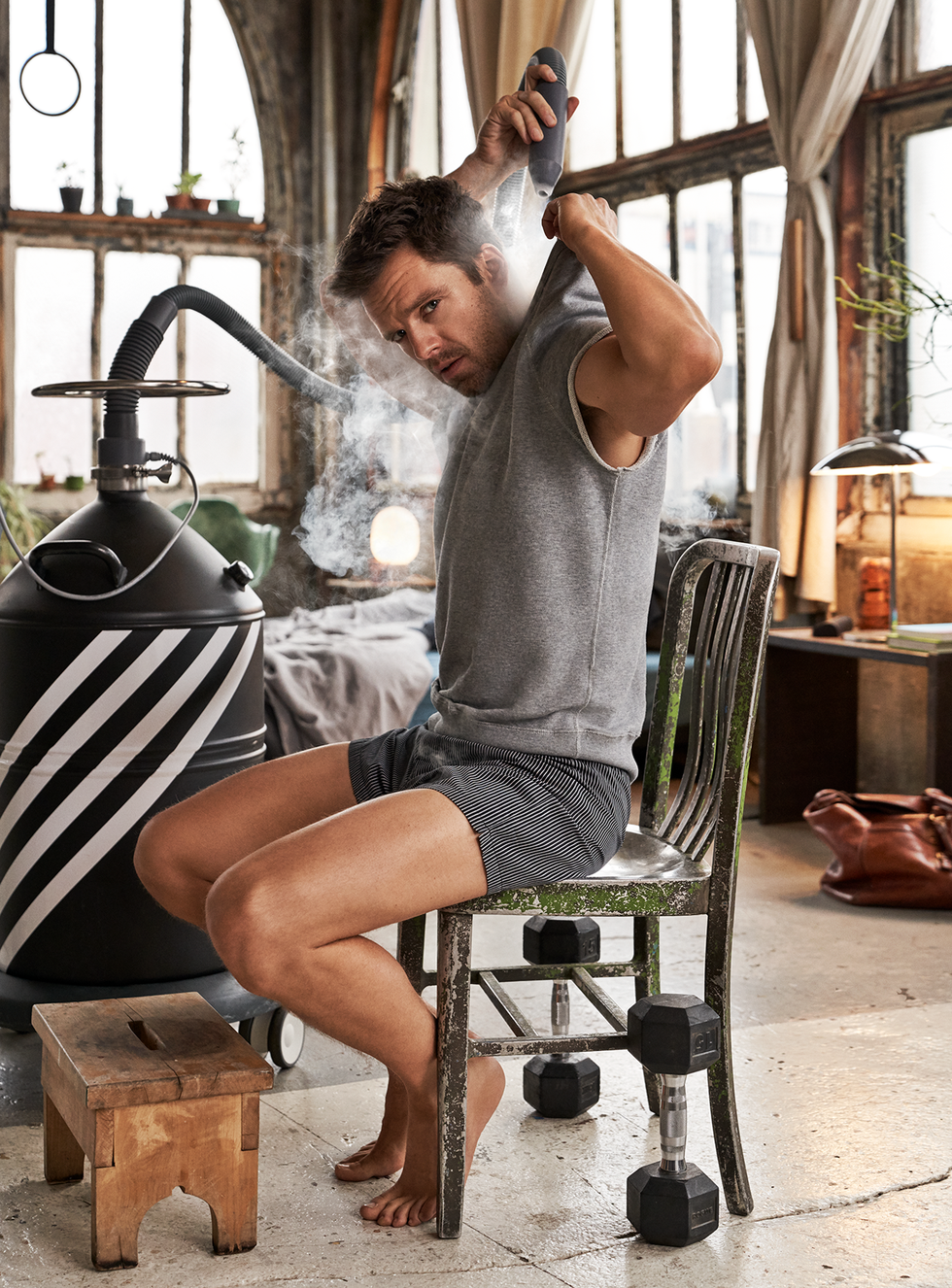
Stan laughs when I bring it up and clarifies that he used a new-and-improved arm in each successive film. With the first iteration, he had to apply lube to slide his real arm into what was essentially two rigid metal tubes. “It was like having a massive hammer attached to me,” he says, “but it looked unbelievable in the movie, and it actually informed a lot of my body language.”
Subsequent arms were more mobile, and Stan doesn’t have to lube up to get in there anymore: There’s a sleeve inside the arm for his next appearance as the Winter Soldier. But, he concedes, he did get too big for the arm used in Civil War. “I was so insecure being around these massive fucking guys, so I started lifting really heavy and ate a lot. I remember I showed up, and I was a little bit bigger than I had been in The Winter Soldier. The arm was a bit tight,” he says. “I was losing circulation.”
Stan is not a new arrival in the Marvel universe: He made his superhero debut in 2011, with Captain America: The First Avenger. But recently he’s enjoyed a burgeoning late-term fandom as his roles (and arms) have ballooned. Beyond Marvel, he starred alongside Margot Robbie in 2017’s I, Tonya, as Tonya Harding’s jackass boyfriend. When we meet in October, he’s just returned from shooting the spy film 355 in London, with Jessica Chastain, Penélope Cruz, Lupita Nyong’o, and Diane Kruger. Another insecurity-inspiring roster.
With Stan’s constellation of anxieties—he says he’s “terribly self-aware, to the point of detriment”—he is uniquely suited to stardom in 2020. A decade ago, audiences wanted actors to be pillars of Hollywood hubris, strutting around in latex Marvel suits, muscly and impenetrable. We still want the muscles, but we also want stars to be genuine.
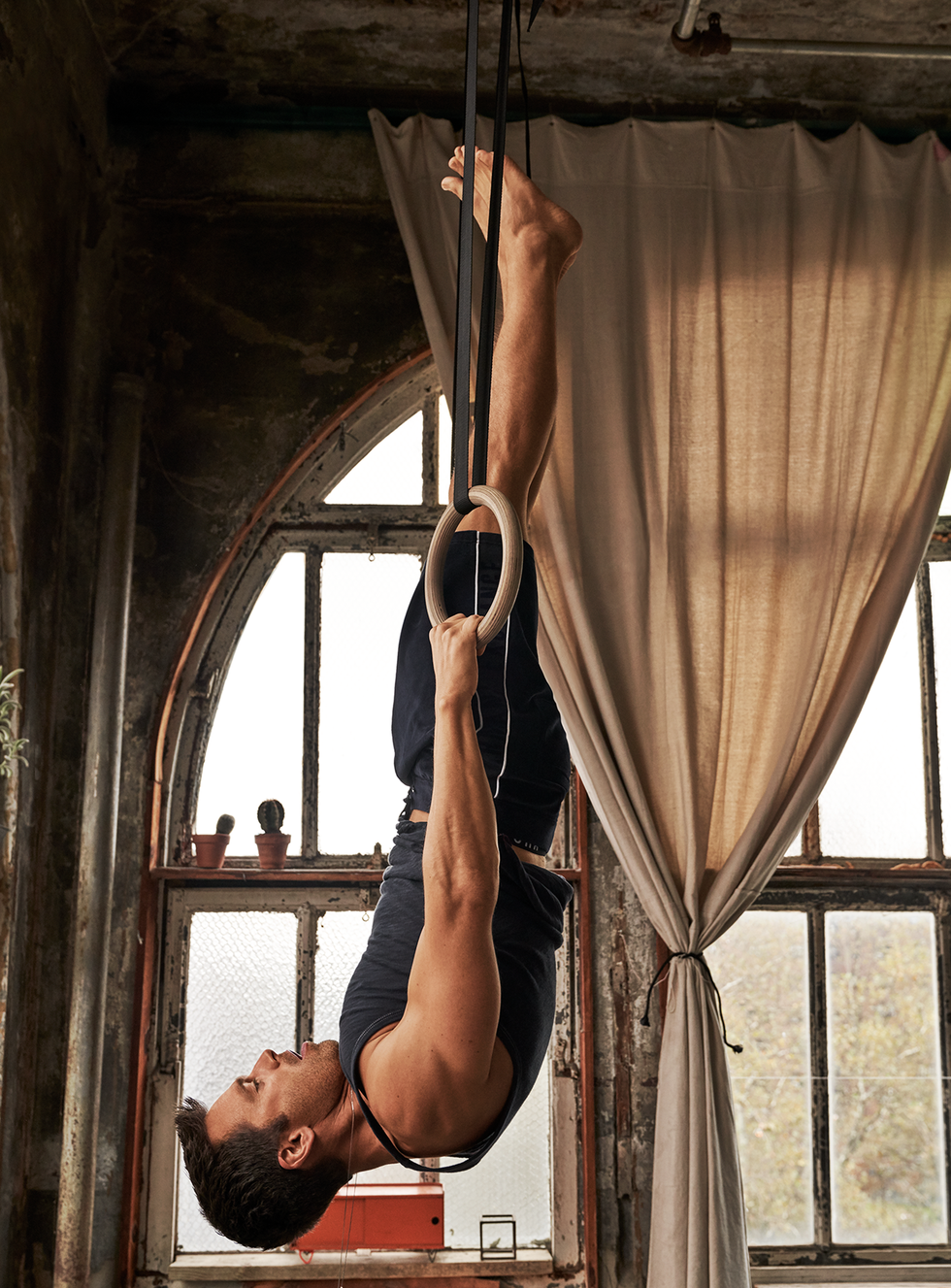
Marvel films can seem at odds with that national craving for authenticity. Steve Rogers, for example, becomes Captain America instantly, in the first ten minutes of The First Avenger: He goes into a machine and emerges fit, huge, and self-actualized. I ask Stan whether that narrative—man gets muscles and immediately earns the admiration and attraction of everyone in his midst—isn’t a dated, unrelatable picture of masculinity.
“When I was watching Steve Rogers,” Stan starts in, “I saw him question his identity, his alliances, the government. ‘Who am I? What is this? What made me come into this is very different than the role I am in now.’ I think it was very timely, in the sense that you could see that character evolve. Then he gives up his shield and is like, ‘I’m out. I’m going to do my own thing.’ He chooses his own life. It’s actually more relatable.”
There’s an obvious metaphor there: Stan is Captain America, and stardom—and the press tours, the scrutiny, and the training that come with it—is his government, always invading his carefully fortified sense of self. As a result, he can appear very reticent in public, offering only occasional glimpses of the unguarded Sebastian Stan. Audiences live for those moments.
Stan is the anti-celebrity in the year of the anti-celebrity.
And his ambient hostility toward questioning is offset by the behavior of his Falcon costar Anthony Mackie. When alone in interviews, Stan can seem deflective and bored, but he gets an enormous kick out of Mackie, who has jumped in to rescue many an interviewer left to writhe on the hook by Stan. He is the Sebastian Stan whisperer, midwife to a charm that can be difficult to coax out.
“When I’m trying hard to find the honest moment, he sort of unlocks me a little bit. We both laugh and we find a way to have a good time,” Stan says. When I tell him that I’m planning to mine Mackie for gossip, he laughs. “Here’s what he’s going to say: ‘He’s way too serious. It’s boring. He slows everything down. It’s always these questions and, like, the stare. Give this kid a Yoo-hoo! Somebody get him a chocolate milk. Good God, put a smile on his face!’?”
Mackie is the enthusiastic extrovert to Stan’s pensive recluse. Even though I reach him on the phone at 9:00 p.m. after a long day of shooting in Savannah—“I’m already going to bed,” Mackie says in a N’awlins drawl that sounds sleepier than usual—he’s forthcoming about Stan. He describes his costar as a hermit, a chronic Irish-goodbye-er who doesn’t offer much of himself at first. “If the FBI ever needed to get anything out of him, they’d be in very big trouble,” Mackie says. “I don’t know what the male equivalent would be of ‘resting bitch face,’ but Sebastian has nailed that 100 percent.”
His first impression, which lingered for a long time, was that Stan was a very quiet, very reserved actor. They shook hands when they met, but it wasn’t a buddy-com bromance at first sight. It wasn’t until much later, when the two were on a press tour for The Winter Soldier, that they hit it off. Mackie hung out with Stan and a few of his closest friends, and they “unlocked” Stan for Mackie the same way Mackie now unlocks Stan on press tours.
Their chemistry also plays well on set. They share a dedication to their work, and they both come from classical acting backgrounds. (“He went to Juilliard,” Stan says of Mackie. “He can do anything.”) Beyond that, they’re opposites, reining in each other’s moods to a perfect, workable middle. “He calms me down when I’m ready to rage against the machine,” Mackie says. In turn, Mackie bullies Stan into having fun.
Case in point: When they were on a press tour in Beijing, they had one of those endless nights that make press tours seem glamorous. “It just went on and on and on,” Mackie recalls. “We had to do press the next morning, and he’s like, ‘I’m going to bed.’ I’m like, ‘Nope.’ I took his wallet and his cell phone so he couldn’t get into his hotel room. Then, by the time we got to the press, I was fine. He just looked like he’d gotten hit by a car.”
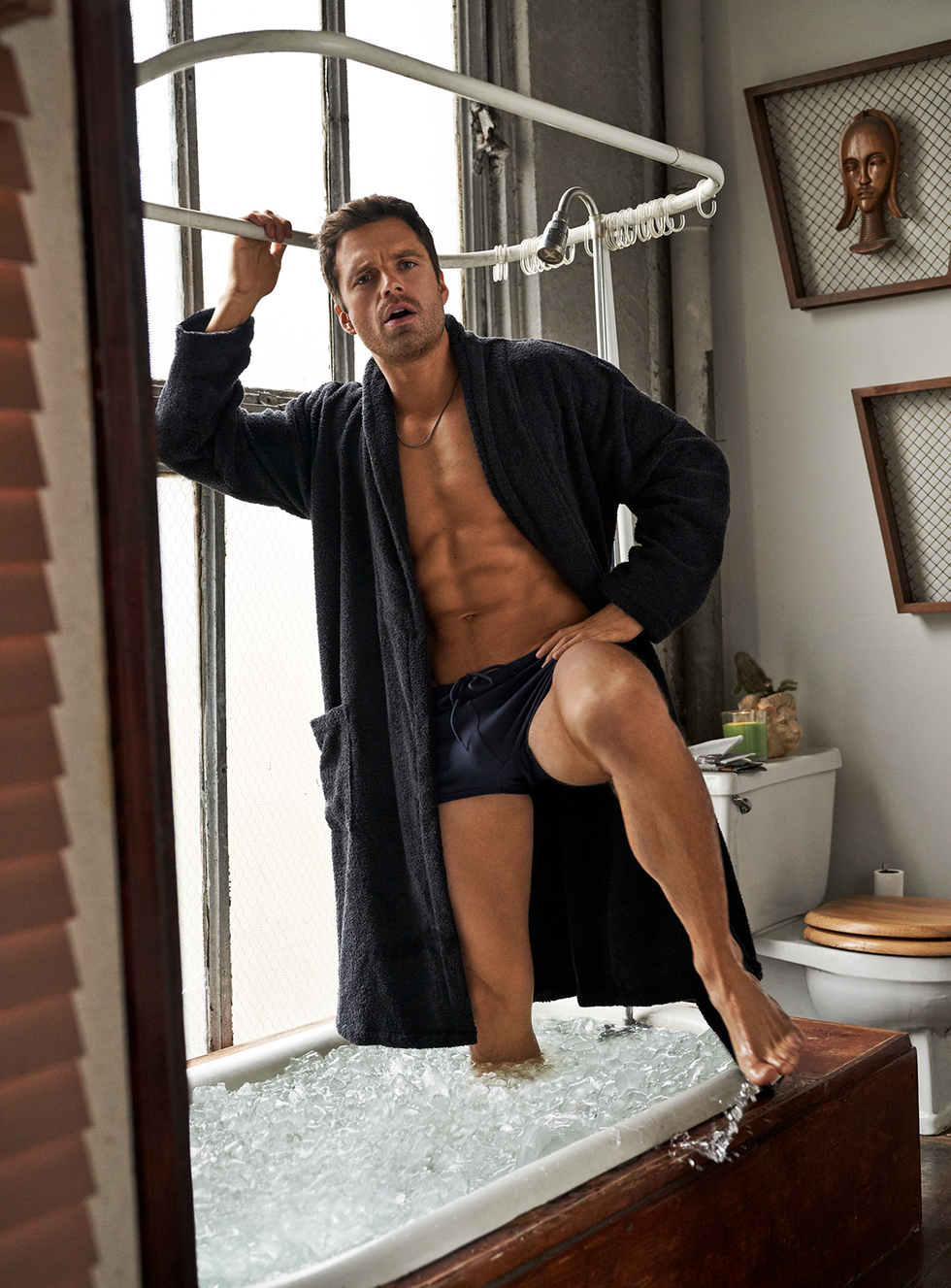
Hollywood has always relished actor partnerships—from Robert Redford and Paul Newman to Ben Stiller and Owen Wilson—but now more than ever, buddying up feels like an imperative. Pairs perform, especially on social media. In November, when Stan and Mackie took over Marvel Studios’ Instagram to announce that they’d begun filming Falcon, fans were as thirsty for their friendship as they were for the show. Their dynamic is the stuff of memes: “[I] want someone to look at me the way Sebastian Stan and Anthony Mackie look at each other,” one fan tweeted.
I know what that fan meant. When Stan does look at you without suspicion—when, perchance, he laughs at something you say—it’s like winning a battle.
WHEN IT COMES to fitness, Stan has also benefited from the influence of a charismatic spirit guide. He played soccer and basketball at his Rockland County, New York, high school, but he didn’t start running and going to the gym until he was in college at Rutgers University. And he didn’t get really into fitness until 2005, when he was cast in a film titled The Covenant, which Stan calls “really classic.”
Really classic, indeed: The Covenant also stars Chace Crawford, whom Stan would later join on Gossip Girl (another classic), and Taylor Kitsch. Stan plays one of five prep-school boys endowed with supernatural gifts and sick abs.
“I got a call,” Stan says. “And one of the producers said to me, ‘Look, you’re going to have to look like John Travolta in Staying Alive.’ He’s just glistening with muscles. It’s ridiculous. I was like, ‘Oh my God.’ I started to work out with a trainer, but it was my buddy
Taylor Kitsch who got me into it.” With the trainer and Kitsch as his gym shepherds, Stan began exercising in earnest.
Then, in 2013, ahead of The Winter Soldier, Stan teamed up with trainer Don Saladino, who’d also sculpted Ryan Reynolds, John Krasinski, and Liev Schreiber. That same year, Stan starred in a Broadway revival of William Inge’s Picnic, playing a character whose defining trait is his hotness.
“Inge was writing something very important about vanity and how people were perceived in terms of being quote-unquote good-looking, beautiful, or pretty,” Stan said in a Playbill interview in 2013. “In the play, there’s something shameful and dirty about it. Our obsession with beauty has not changed. When we see something that turns us on, we either appreciate it or judge it. It’s so primal. We still dismiss people if they’re pretty; we don’t care how they feel, because they should just be happy looking the way they do. That’s something we were trying to say with this production.” Stan is less philosophical about his Picnic bod these days. “I had to be basically shirtless every night, like eight shows a week,” he says. “I really zoned in on diet, and everything transformed.”
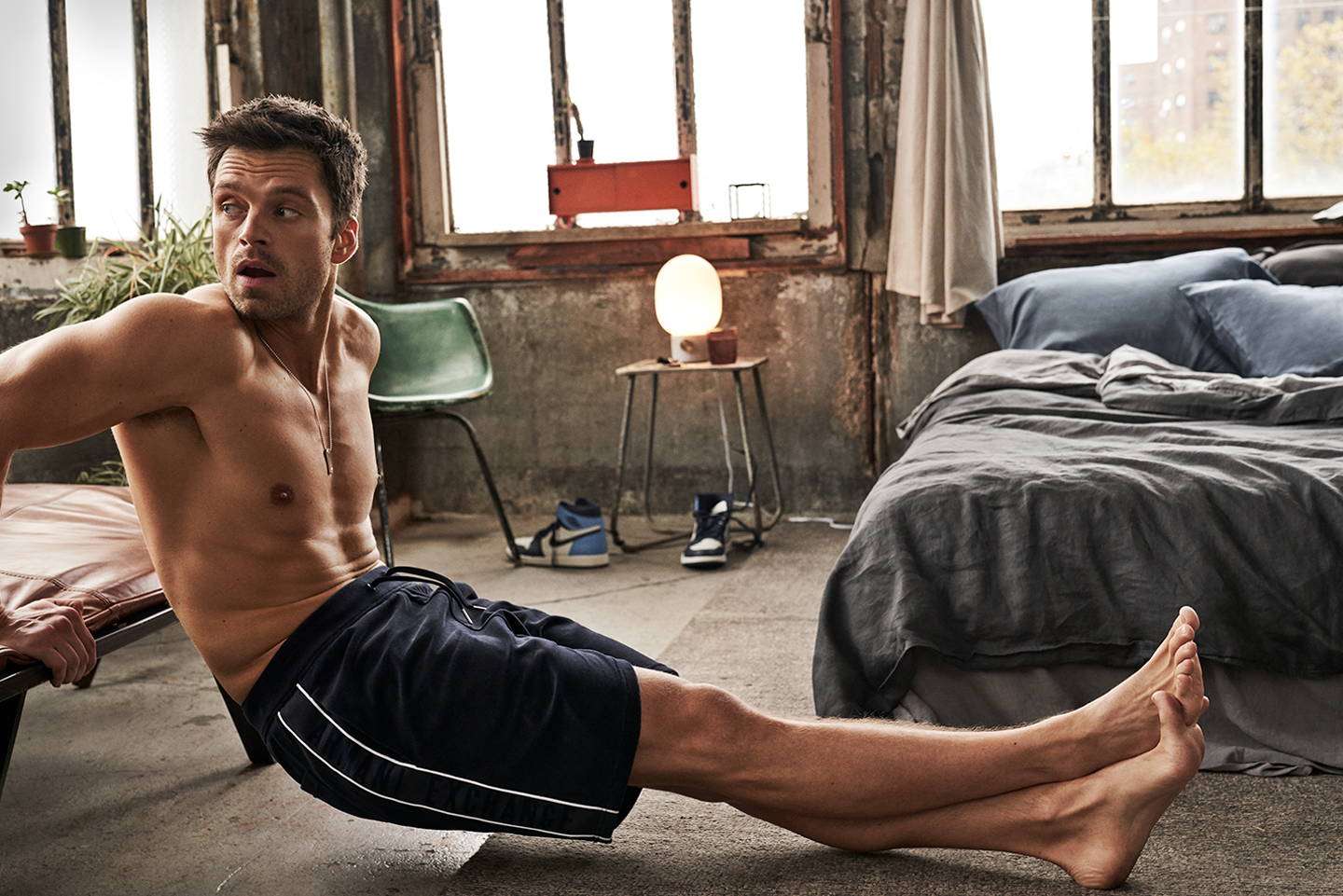
He prefers exercising on an empty stomach, so he generally starts his day with coffee—and a rice cake with some almond butter and honey if he’s feeling depleted. Today he was feeling very depleted, he says, so he had some scrambled eggs with Brussels sprouts and aioli. “I’m not going to tell you the place where I got that,” he adds, unprompted and wary, as though I might start dining there daily in a stalker vigil.
Stan is a proponent of “quality over quantity,” but that doesn’t mean he skimps on his workouts; he just knows that a 20-minute session that catapults his heart rate into the red zone is as effective as an hour of low-intensity bullshit. He runs (“I’m not going to tell you where”) when he’s feeling meditative.
In advance of the Falcon shoot, Stan started lifting weights every morning and knocking out stunt training for the fight scenes. He points out that filming an action movie is a workout in itself: You spend whole days running around and sweating in a heavy suit. “I mean, next to Evans and Hemsworth and all those guys, I feel like I’m 50 miles behind. I don’t think I can get to that size, to be honest,” he says. That aside, Stan feels, in his late 30s, better than ever. “My body right now is probably the best it’s ever been.”
THERE’S A PHOTO of Stan, age 15, on his Instagram. It’s a headshot from Stagedoor Manor, an acting camp that he attended while in high school. He’s recognizable from the brow up—he has the same broad forehead, the same voluminous hair. His arms look pale and soft, like overcooked linguine, and he’s staring down the camera with theater-kid intensity.
Stan lived in Romania until he was eight years old. Shortly after the Romanian revolution, he and his mother moved to Vienna and stayed there for four years before heading to New York in 1995. No, he says, he didn’t have a foreign exchange student’s social cachet in middle school. “Maybe if I was from France or something. But I am Eastern European. We left communism,” he says. “When I came here, I just wanted to be like everybody else.”
I ask Stan which of his mannerisms are typically Romanian. “You’re kind of putting me on the spot to define a whole nation—a guy who hasn’t been there for years,” he says. But he thinks for a second. “For me, based on my mother, the ‘Romanian temperament’ is perseverance—being able to handle more than you think you can. At 27, my mother was working two jobs in a foreign country where she barely spoke the language. There’s a sense of family and perseverance that’s deeply ingrained in the blood.”
Even for someone who has experienced a certain degree of stardom, Marvel fans can be a shock to one’s sense of family. Certain Marvel stars acquiesce to the attention on some level, greeting fans with a Chris Hemsworthian openness to scrutiny. Stan’s boundaries are reflexive and firm, as though his sense of self is always under attack. (Which, to be fair, it may well be: “He’s so reserved,” Mackie says, “but in this day and age that’s a very good quality.”)
Stan is more protective of his personal life than most actors. Celebrities often use social media to dispense calculated chunks of themselves in exchange for privacy. Stan occasionally opens up on Instagram: “Been working with this guy through years of self judgement and mental wars when it comes to fitness and LIFE,” he wrote of Saladino in a caption accompanying a gym selfie. But questions about the people in his orbit ping ineffectually against his poker face.
He attributes this to only-vaguely-alluded-to incidents in which his family and friends were subject to public attention. As a public figure, he has opted into that attention, he explains, but they haven’t. It upset him when they were the targets of scrutiny, particularly when that scrutiny came from his fans. Stan seems to be looking for earnestness in an industry that, on the whole, disdains earnestness. He “tries hard to find the honest moment,” as he himself puts it (much like how he saw a profound statement about “our obsession with beauty” in William Inge’s horny play).
In this, the Marvel universe is an improbably good fit for him. We speak the week after Martin Scorsese said Marvel films “are not cinema,” and Stan is as defensive of the films as he can be without disrespecting Scorsese, one of his heroes. “All I know is that all movies affect people,” he says. “I’ve certainly experienced firsthand many people who have been affected and helped by Marvel movies.”
Captain America fans lean earnest. People have told Stan that Bucky Barnes helped them cope with their PTSD. During Q&A sessions, he’s asked questions like “What would Bucky Barnes’s major be?” and “What happened to Bucky Barnes when he fell from the train?” Stan fields those questions without sarcasm or diversion.
“They think we are these people,” Stan says, again without condescension. He’s content to take questions about Bucky Barnes, especially if it distracts fans from asking questions about Sebastian Stan. “Now we’re much more obsessed with the personality rather than the actor. We take people and swallow them and digest them and chew them up, and then we spit them out the other side. Then we’re done,” he says. “We’ve done that with numerous celebrities—people. I’ve seen people have massive ups and downs and stuff. All I can do is just try to be as honest as I can. And do my job.”